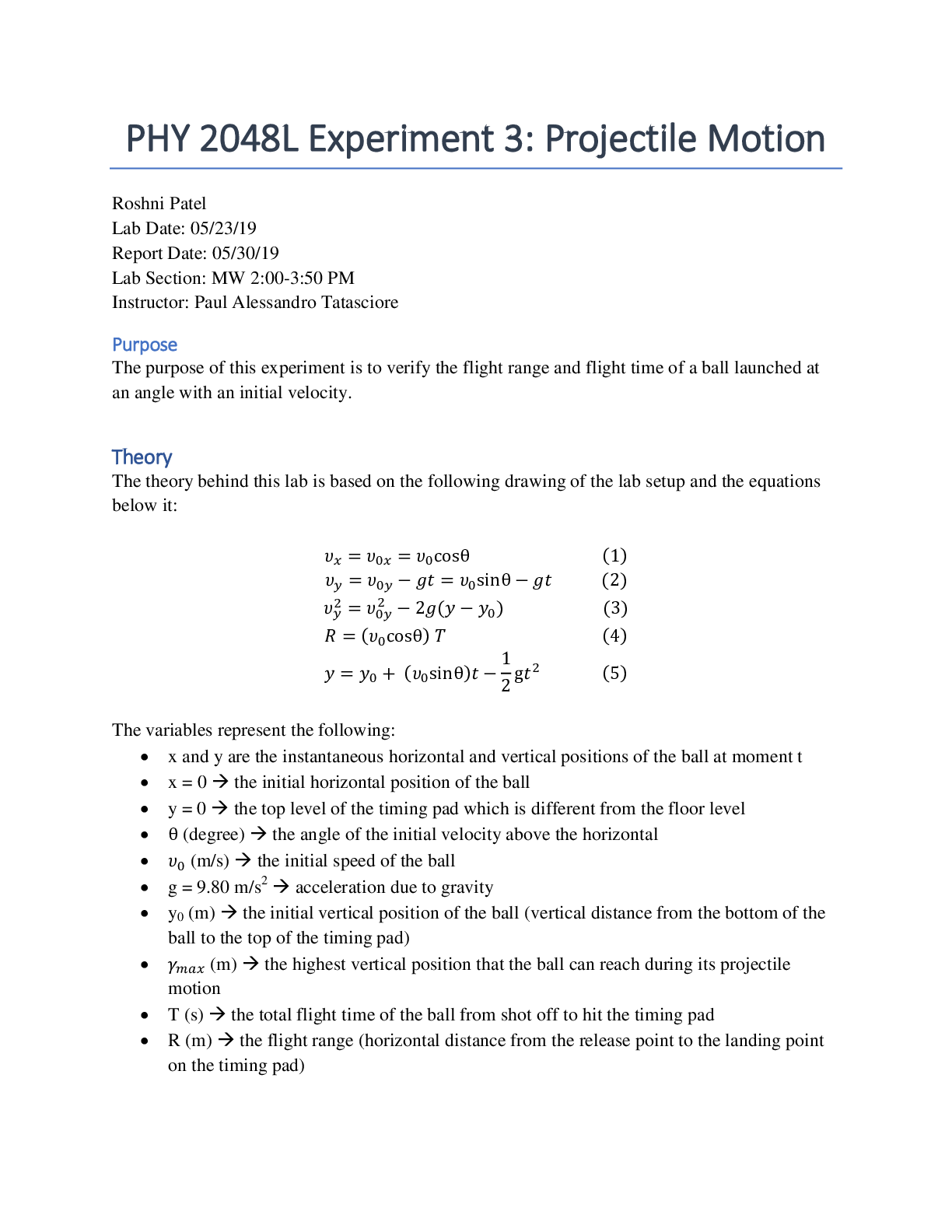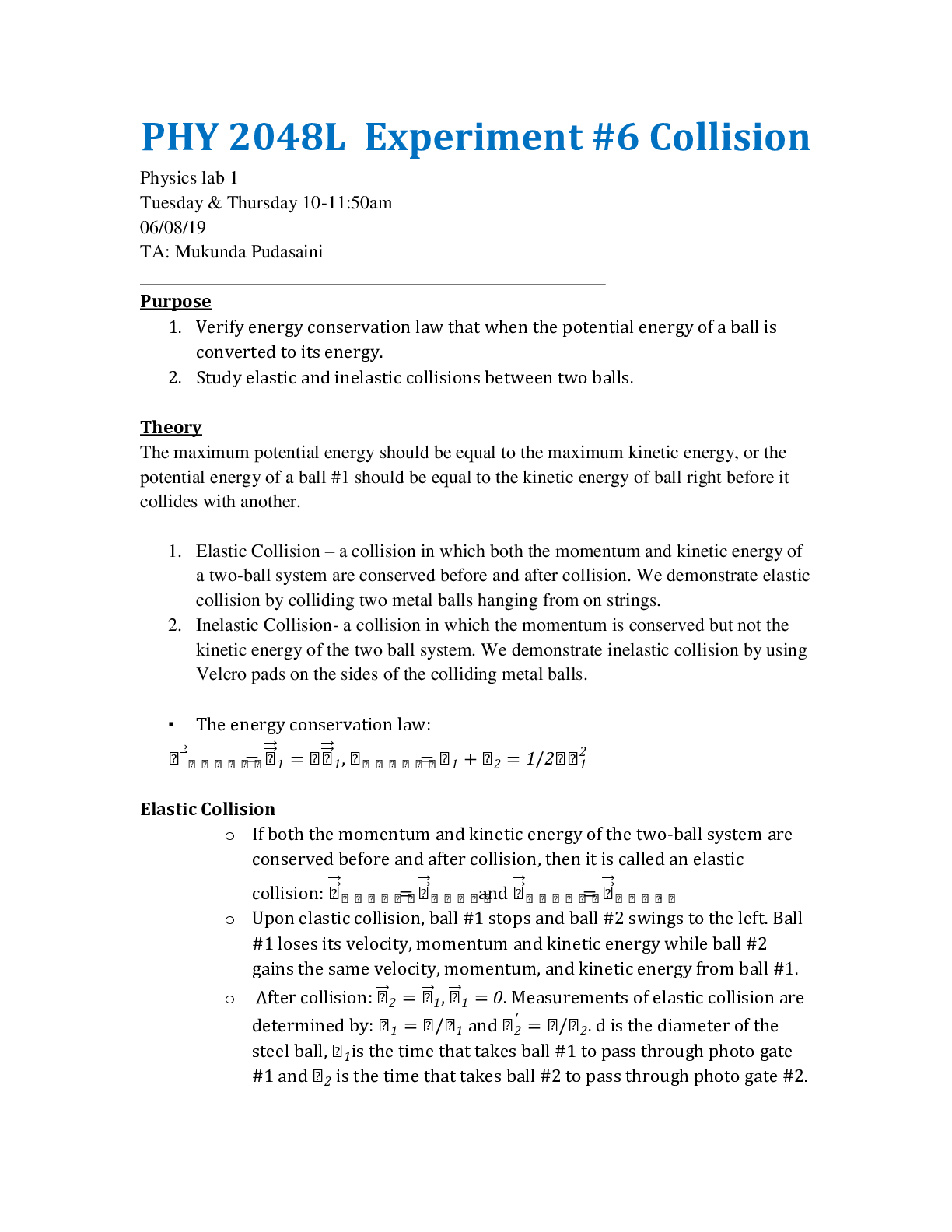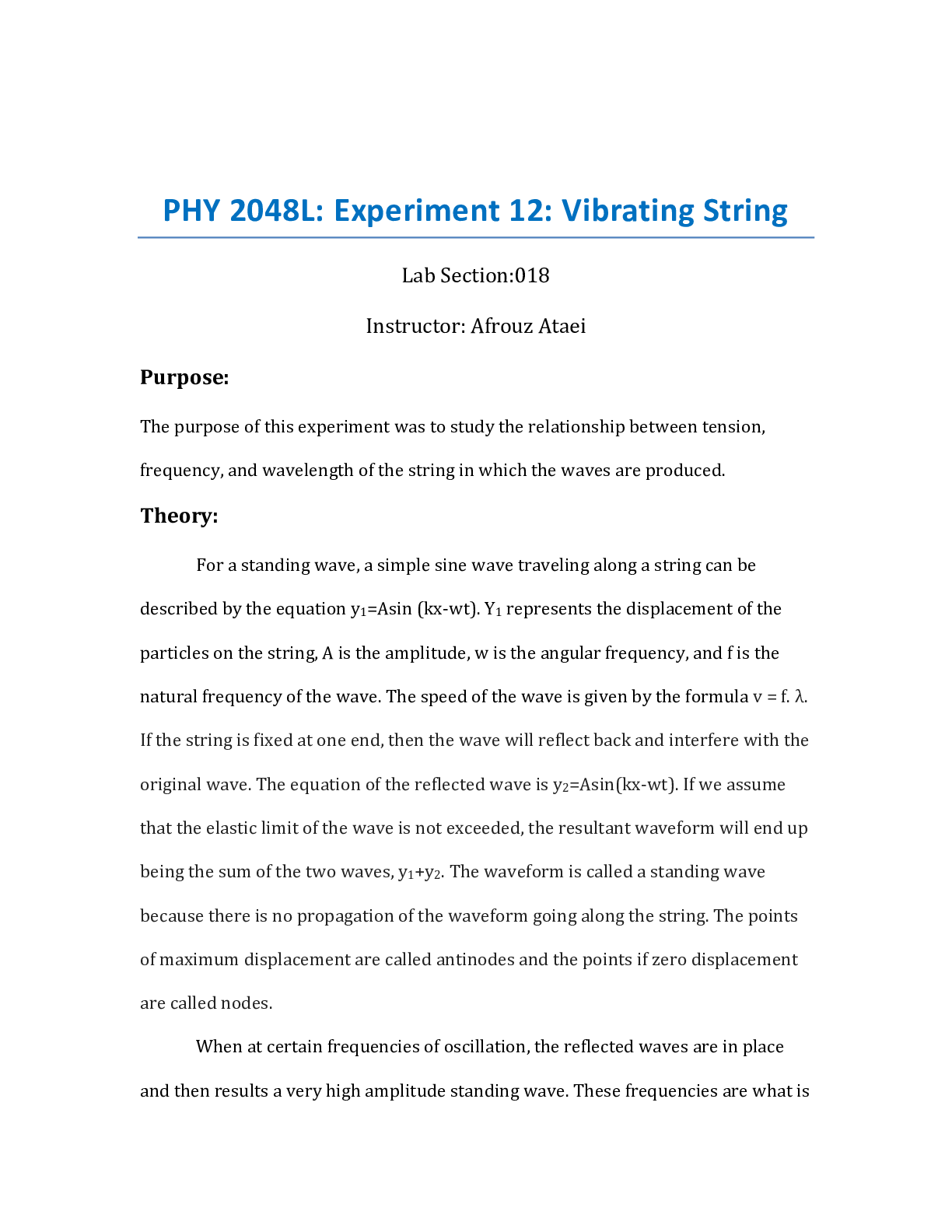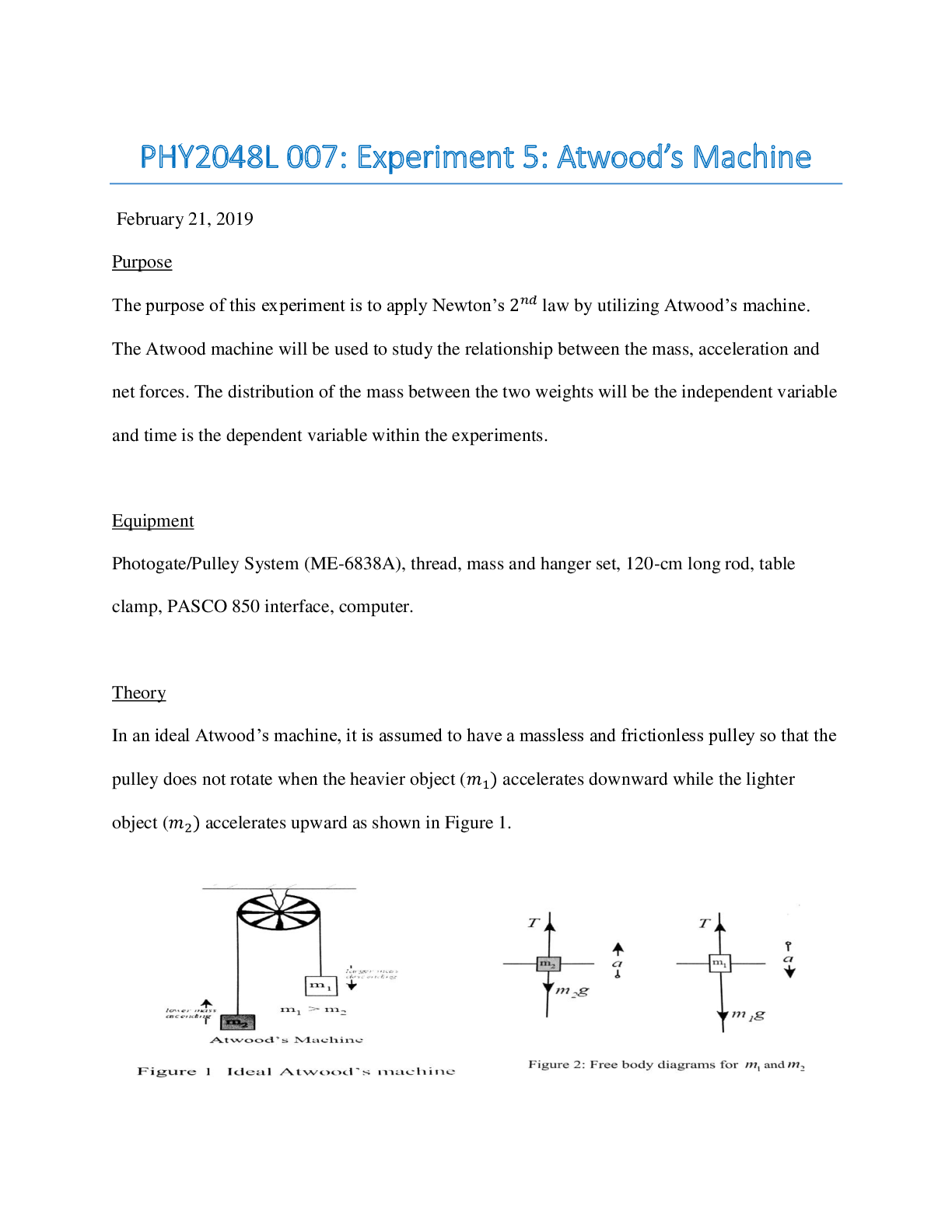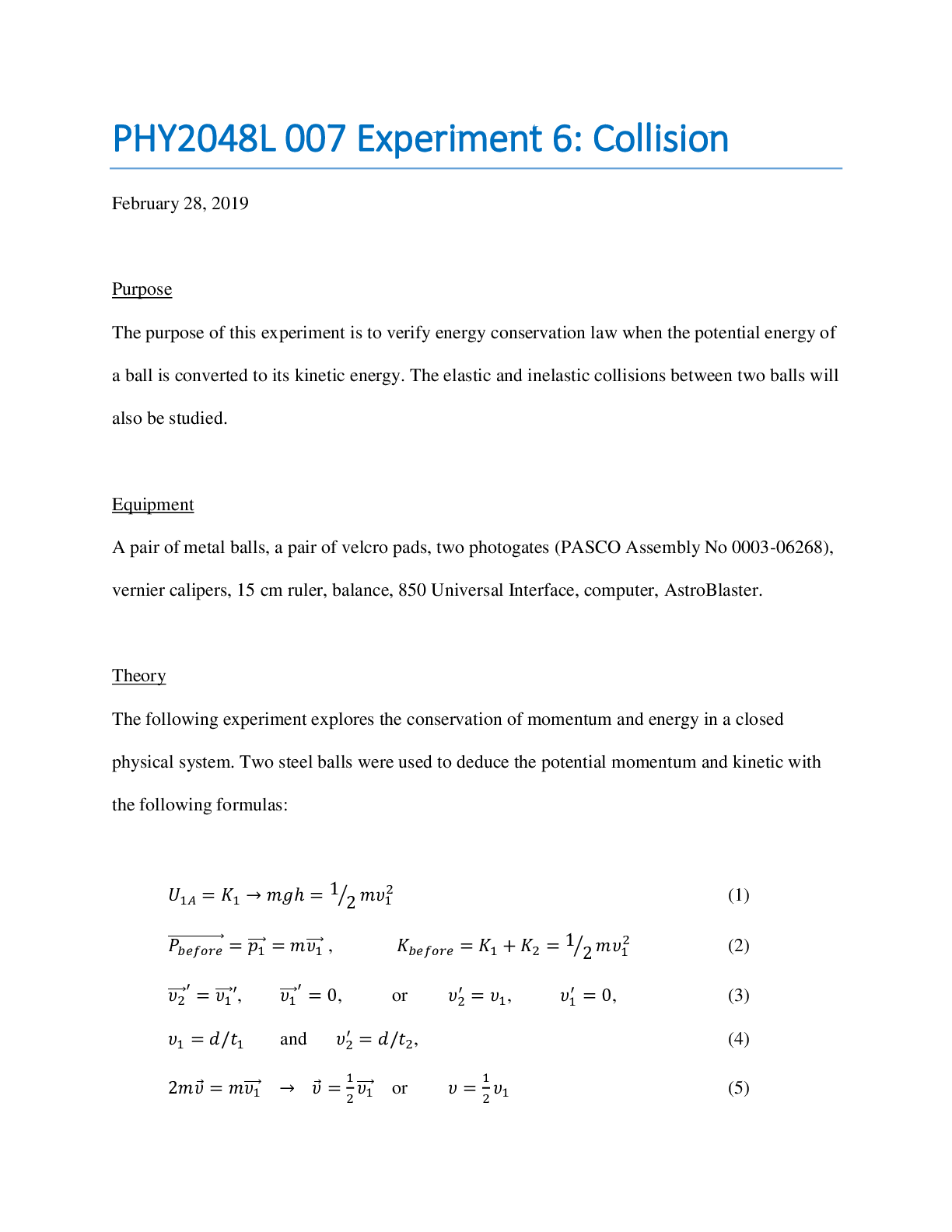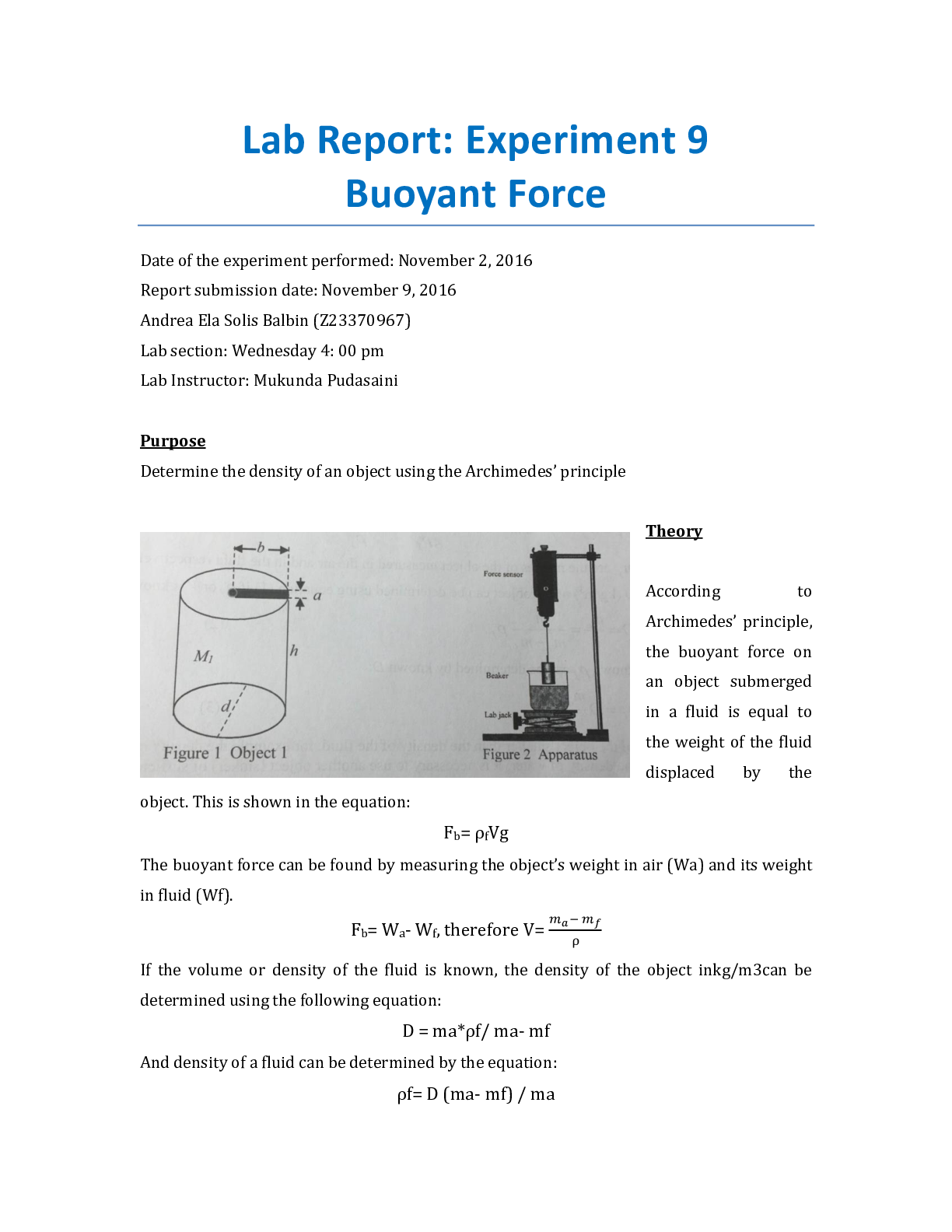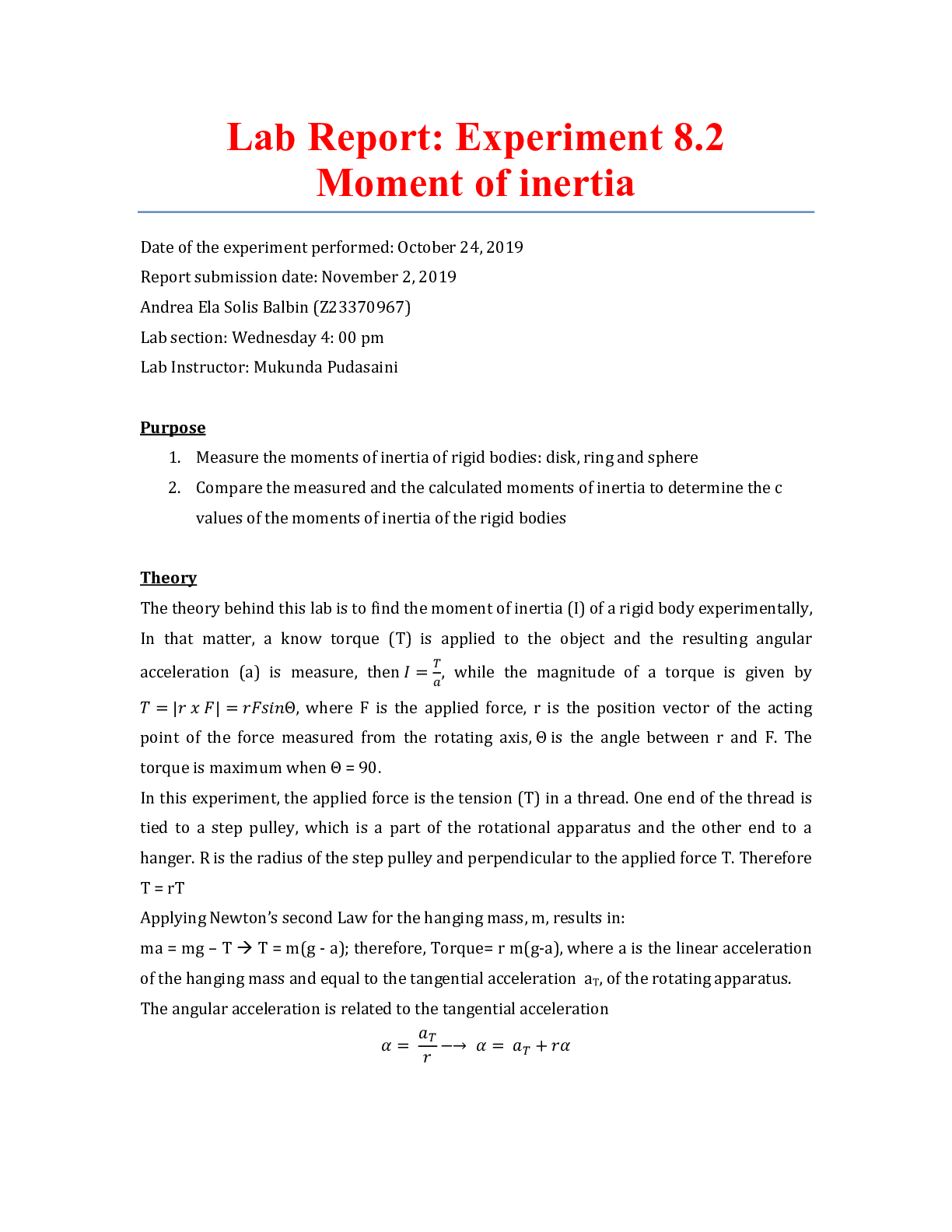Physics > Lab Report > Florida Atlantic University - PHY 2048LPhysics Lab Report 5. Experiment 5: Collision. Verify the ene (All)
Florida Atlantic University - PHY 2048LPhysics Lab Report 5. Experiment 5: Collision. Verify the energy conservation law when the potential energy of a ball is converted to its kinetic energy as well as study elastic and inelastic collisions between two balls.
Document Content and Description Below
PHY 2048L Physics Lab Report 5 Experiment 5: Collision Introduction In this experiment, the student used a pair of metal balls and two photogates to measure energies of two types of collisions. The ... purpose of this experiment was to verify the energy conservation law when the potential energy of a ball is converted to its kinetic energy as well as study elastic and inelastic collisions between two balls. The student is expected to understand elastic and inelastic collisions as well as calculate total energies, momentums, and kinetic energies of the specified balls. Theory In this lab, the student utilized a pair of metal balls, a pair of Velcro pads, two photogates, vernier calipers, a 15 cm ruler, balance, interface box, computer, and an Astroblaster. This experiment revolves around collisions, kinetic and potential energies, and momentum. In this experiment, the student uses two identical steel balls with mass m and diameter d that are suspended by two massless strings which happen to be separated into equilibrium. When the first ball is pulled from its equilibrium position to the specified height and released from its resting position, ball 1 gains a maximum velocity, V1, just before its hits ball 2. Ball 2 is at rest before the collision so V2 is measured to be 0. The direction of vector V1 is to the left and the magnitude is given by the energy conversation law mgh 1⁄2 (V1)2 where mgh is the potential energy of ball 1 at position A relative to position B as specified in the figure provided and 1⁄2 (V1)2 is the kinetic energy of ball 1 at position B before it hits ball 2. The momentum of a moving object is mV1. When the first ball hits the second, the two steel balls make one dimension head-on elastic collision. From momentum and energy conservation laws for elastic collisions the following equations are derived: a) V1 = Vꞌ2 and b) Vꞌ1 = 0. Vꞌ1 and Vꞌ2 are the velocities of ball 1 and ball 2 respectively after the collision. This is elastic collision. If the student sticks a Velcro pad to each ball on the touching side, the two balls will stick together upon collision called inelastic collision. From momentum conservation law, the equation is V = ½(V1) where V is the common velocity after the inelastic collision. The kinetic energy not conserved upon inelastic collision can be found with Kafter = ½(2m)V2 = ¼(mV12) = ½(Kbefore). In this lab, the velocities are measured differently for elastic and inelastic collisions. For elastic collisions, V1 = d/t1 where d is the diameter of the ball and t1 is the time that takes ball 1 to pass through photogate 1 while V2 = d/t2 where t2 is the time that takes ball 2 to pass through photogate 2. For inelastic collisions, V1 = d1/t1 where d1 equals to d in addition to the thickness of one Velcro pad and t1 is the time that takes the two – ball system to pass through photogate 2 and V = d2/t3 where d2 equals to 2d in addition to the thickness of two Velcro pads and t3 is the time that takes two – ball system to pass through photogate 2. Procedures Questions and Exercises Hold the smallest ball at arm’s length from your body and release it at a drop height h0. The ball will be bounced upward after it hits the ground and reach a height hA. Is hA > h0 or hA < h0. Why? Follow the steps and instructions shown in the figures to play the toy “AstroBlaster”. Comparisons of the observations in A and B show that hB >> h0 (h0 > hA), why? Assume all the collisions are elastic and air resistance can be neglected in both A and B. Use the energy and momentum conservation laws to prove hA < h0, hB = (M/m)2 h0 >> h0, where M and m are the masses of the AstroBlaster and the smallest red ball respectively. [Show More]
Last updated: 1 year ago
Preview 1 out of 9 pages

Reviews( 0 )
Document information
Connected school, study & course
About the document
Uploaded On
Oct 01, 2020
Number of pages
9
Written in
Additional information
This document has been written for:
Uploaded
Oct 01, 2020
Downloads
0
Views
99


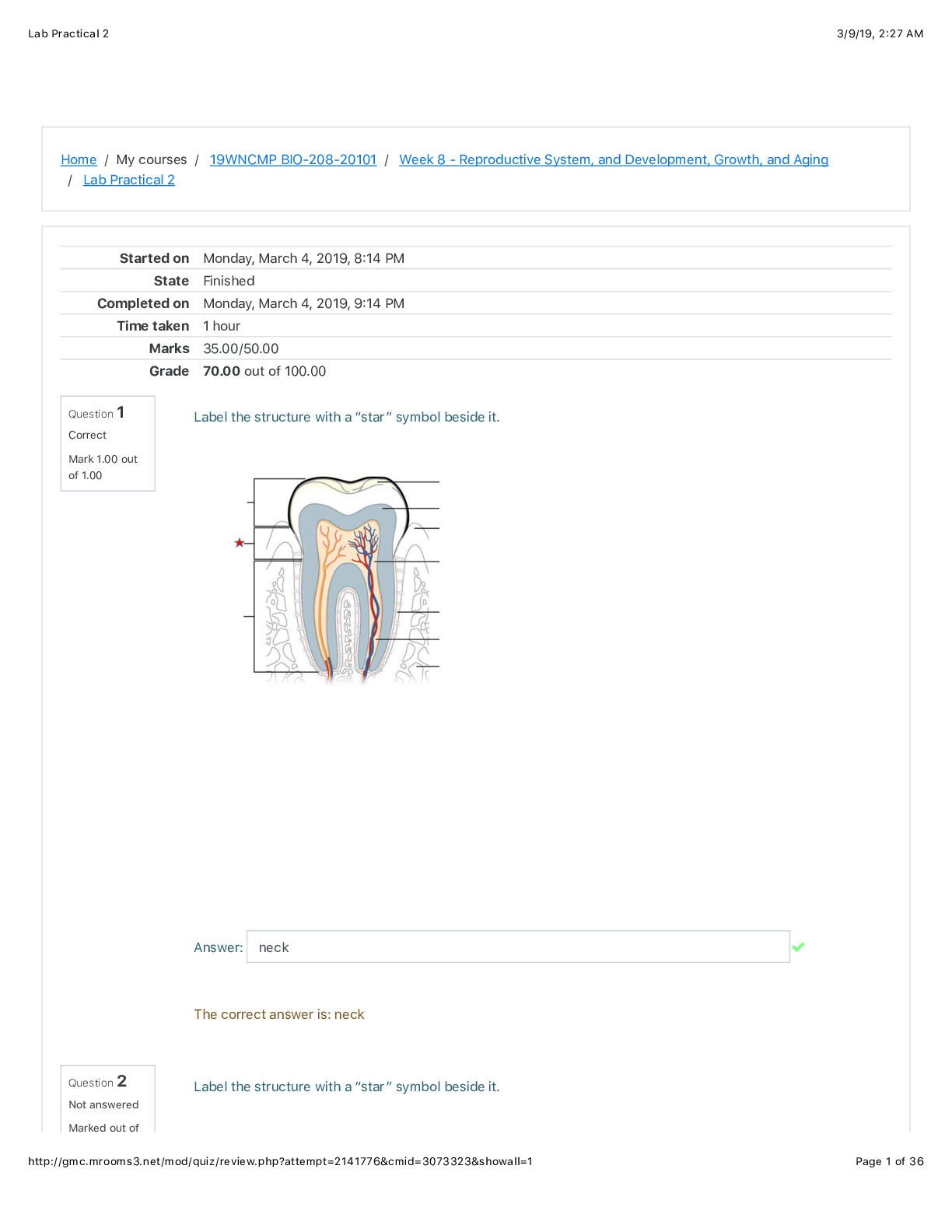
 (1).png)
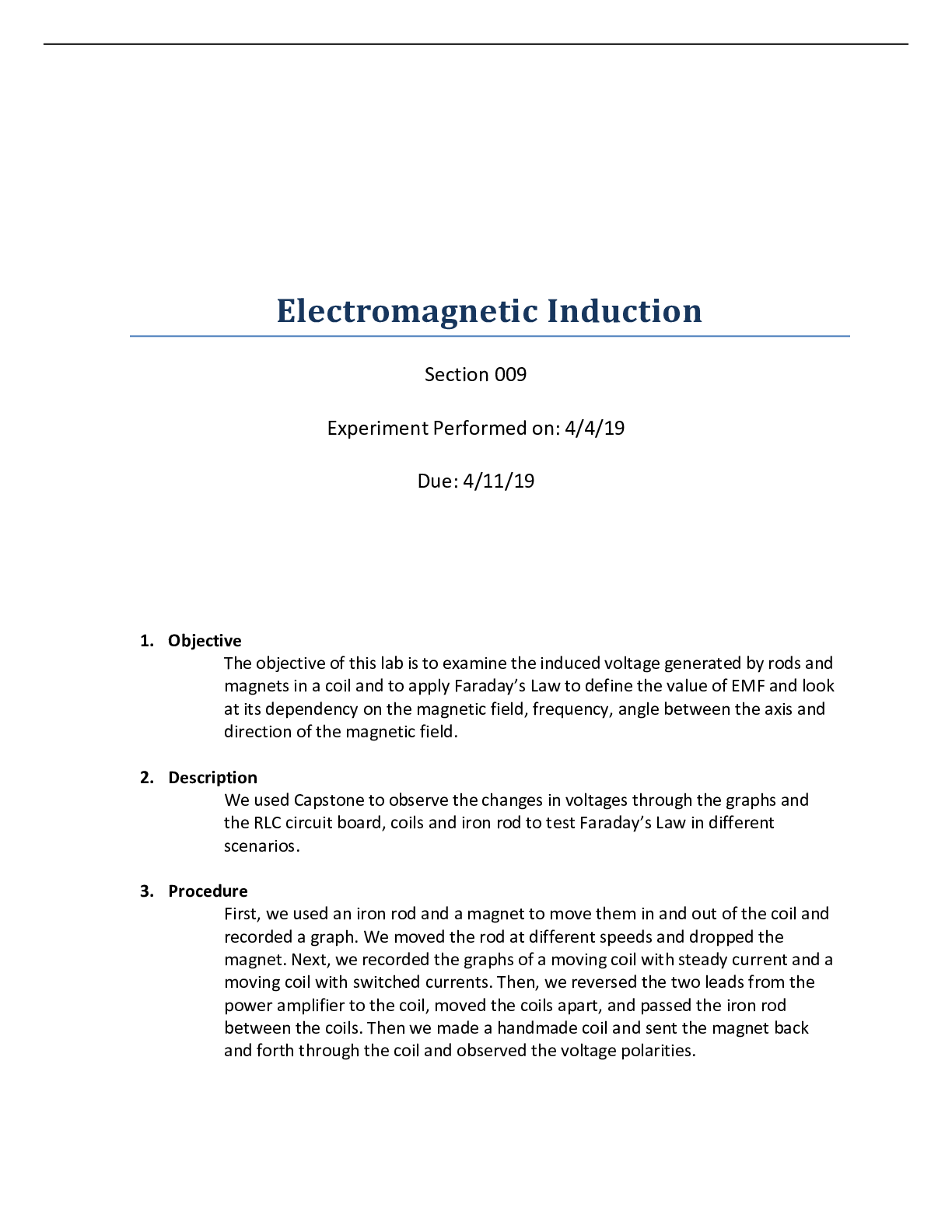



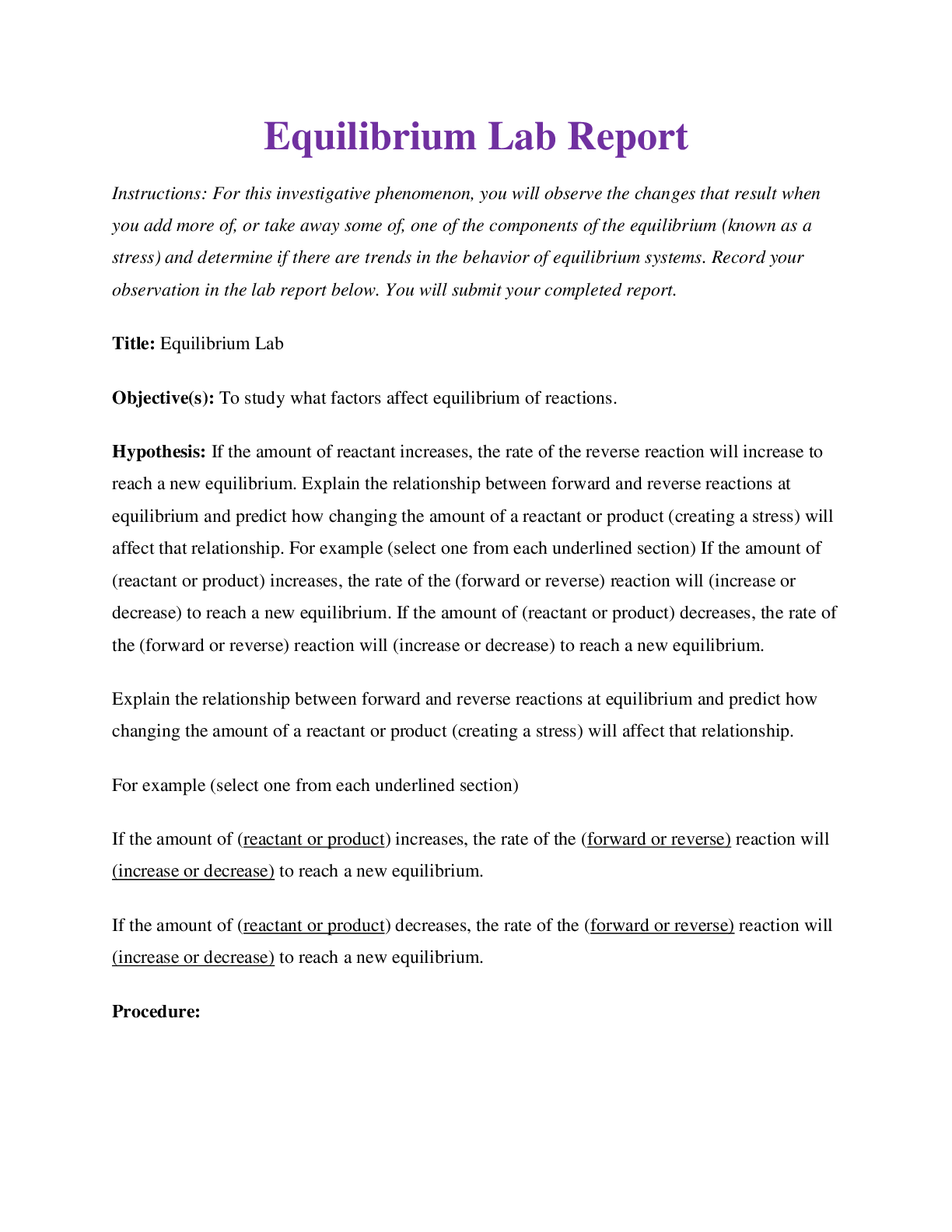
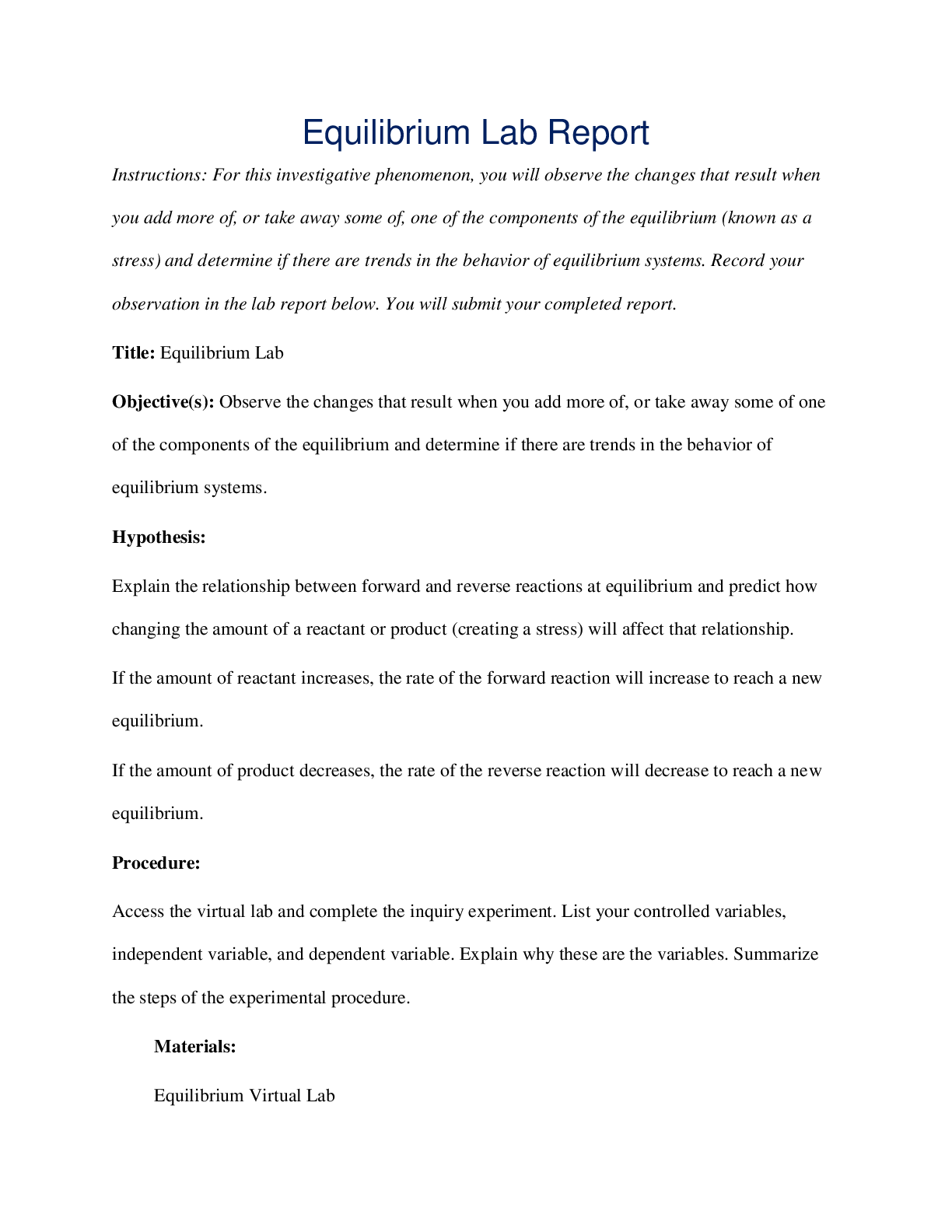



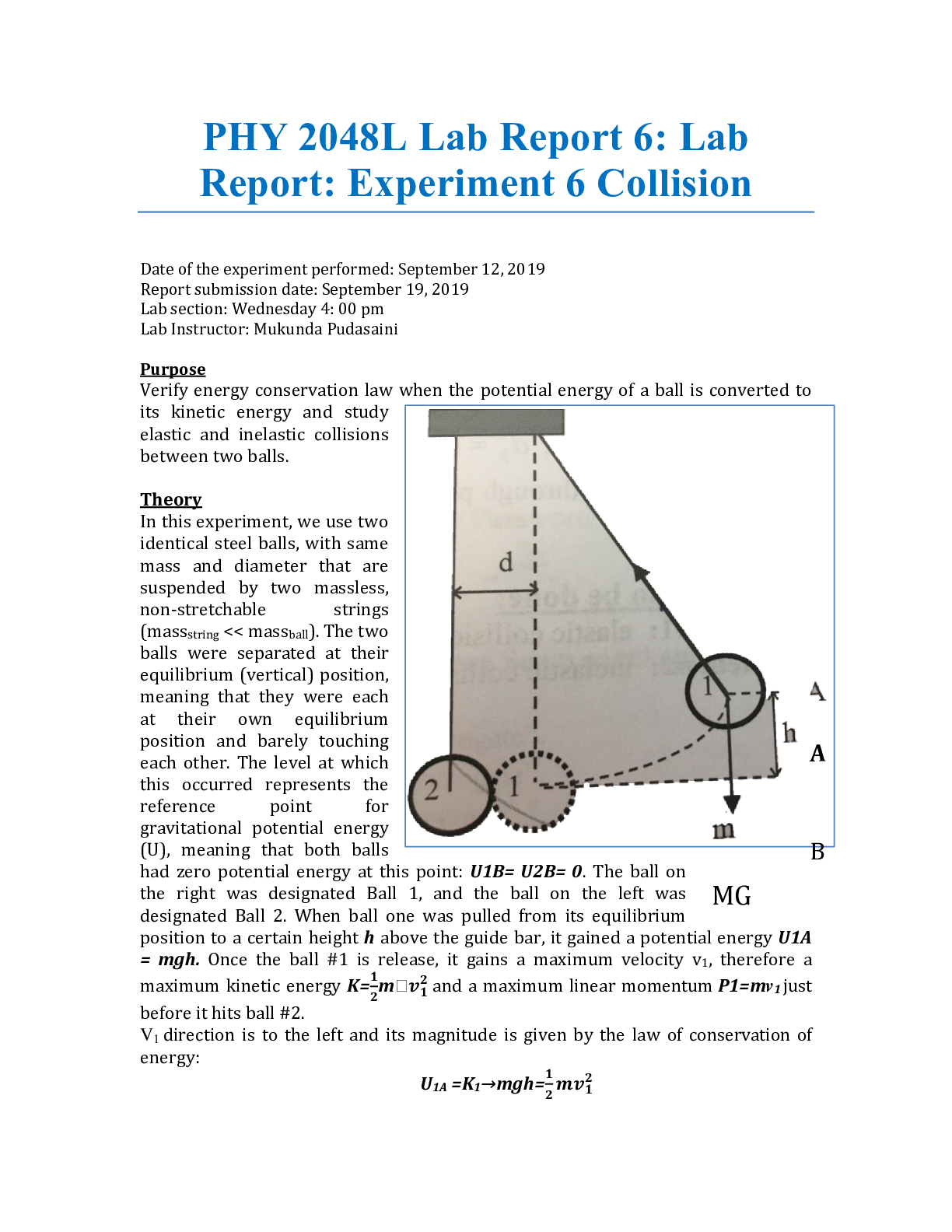


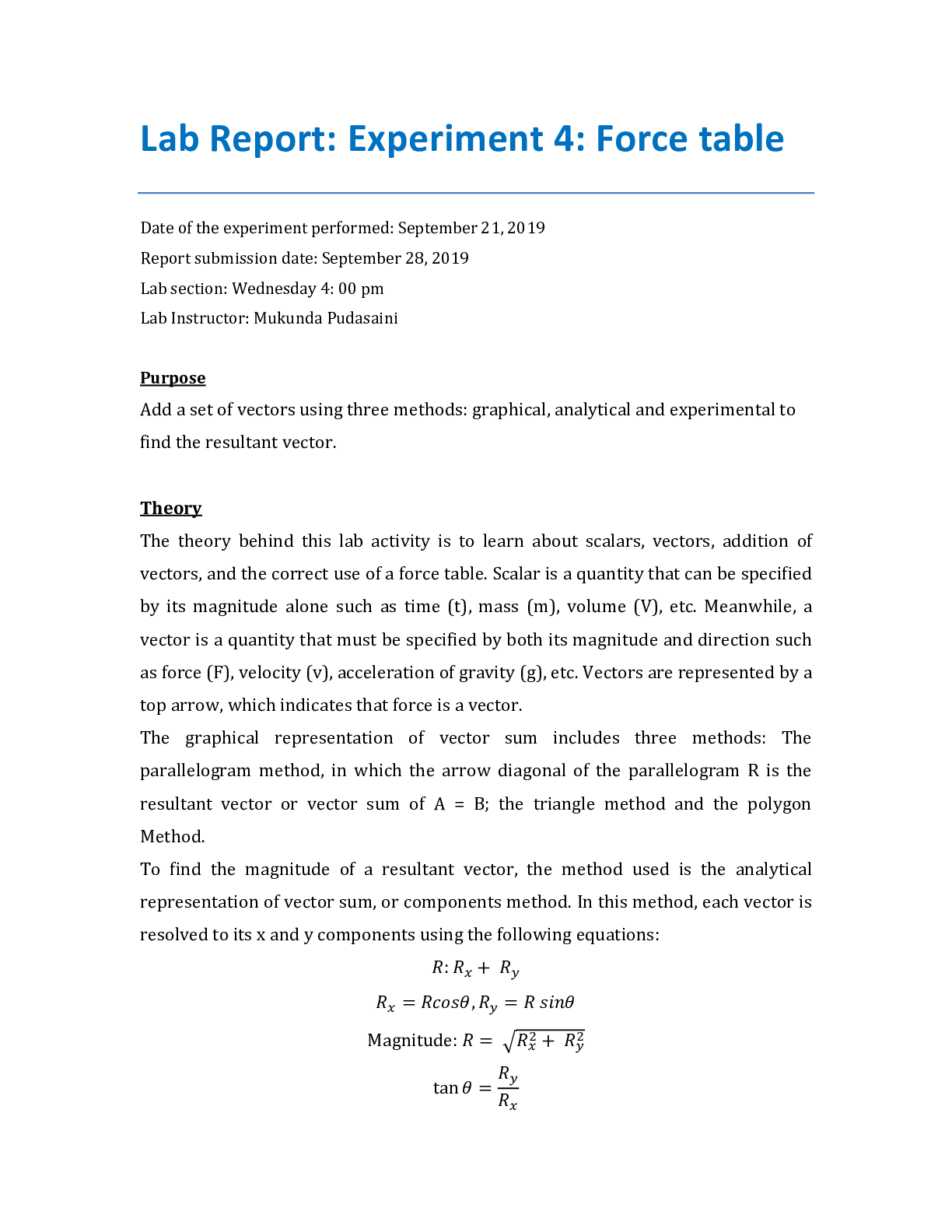

.png)



